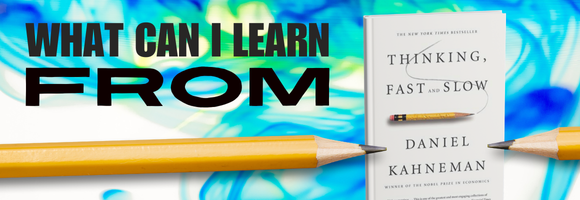This article is part of a series exploring key lessons from classic books—timeless works that continue to offer valuable insights. Whether you’re revisiting a familiar favourite or discovering these ideas for the first time, we’ll uncover practical wisdom that remains relevant today.
Thinking Fast and Slow by Daniel Kahneman explores how our minds work and why we make certain decisions. The author, who won the Nobel Prize in Economics, reveals fascinating insights into how we think and how we can make better choices in our lives.
Have you ever made a decision in the heat of the moment that you later regretted? Or perhaps you’ve had a ‘gut feeling’ about something that turned out to be wrong? These experiences reflect the two different ways our brain processes information—what Kahneman calls System 1 and System 2 thinking.
Understanding Your Two Mental Systems
Think of your mind as having two characters: a quick, intuitive thinker (System 1) and a slower, more analytical thinker (System 2). System 1 is like your automatic pilot—it makes quick decisions based on past experiences and emotions. It’s great for everyday tasks like driving a familiar route or reading facial expressions, but it can also lead us into mental traps. System 2 is your careful, logical thinker. It kicks in when you’re trying to solve a complex problem or make an important decision. While it’s often more reliable, this kind of thinking requires more energy and deliberate concentration.
Practical Lessons for Better Decision-Making
- Recognise When to Slow Down
Of course, not every decision needs deep analysis (it would be difficult to get anything done!), but some undeniably do. Important choices about your career, finances, or relationships deserve your System 2 attention. So, when facing these decisions:
- Sleep on important choices rather than deciding immediately
- Write down your reasoning to make your thinking more systematic
- Consider talking the decision through with someone else to gain perspective
- Watch Out for Mental Shortcuts
Our quick-thinking System 1 uses mental shortcuts (what Kahneman calls ‘heuristics’) that can lead us astray. Here are some common ones to watch for:
– The Anchoring Effect: When we make estimates or get involved in negotiations, we tend to rely too heavily on the first piece of information we receive. For example, if you’re negotiating your salary and your boss mentions a figure first, that number will strongly influence what we think is reasonable.
Practical tip: Before negotiating, decide on your ideal figure independently before hearing the other party’s offer.
– The Planning Fallacy: This is seen when we consistently underestimate how long tasks will take and how much they’ll cost. This explains why so many projects run late and over budget.
Practical tip: Whatever time you think something will take, double it. And always build in buffer time for unexpected delays.
- Understand Loss Aversion
One of Kahneman’s most important insights is that we feel losses much more intensely than equivalent gains. In fact, the pain of losing is about twice as powerful as the pleasure of gaining. This can lead to overly cautious decision-making or holding onto things (like jobs, investments, or even relationships) longer than we should.
Practical tip: When making decisions, ask yourself, “Am I avoiding this change mainly because I’m afraid of losing what I have rather than because staying put is actually better?”
- Improve Your Judgments
To make better decisions in general, there are some simple ideas to consider:
- Question your first impressions
- Look for evidence that contradicts your beliefs
- Consider different viewpoints before reaching conclusions
- Remember that confidence doesn’t equal accuracy
The Power of Awareness
Perhaps the most valuable lesson from Kahneman’s work is to become more aware of how our minds work. Understanding these mental patterns doesn’t make us immune to them, but it does give us a better chance of catching ourselves when we fall into these “thinking traps”.
By recognising when we need to slow down, questioning our automatic responses, and being aware of our biases, we can make better decisions in both our personal and professional lives.
Remember, the goal isn’t to eliminate quick thinking—we need both systems to function effectively. The key is knowing when to trust your gut and when to take a step back and think things through more carefully.
If you want to explore these ideas further, you can find Thinking, Fast and Slow here.

